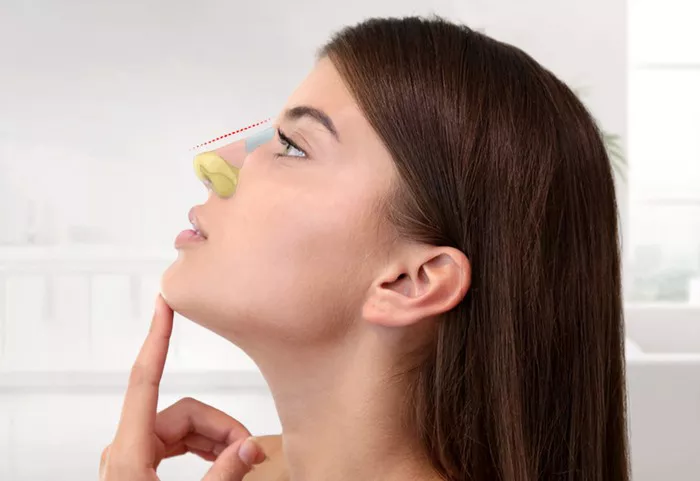Rhinoplasty, also known as nose surgery, is a cosmetic procedure that is performed to improve the appearance of the nose. After the procedure, it is common to experience swelling and bruising around the nose and eyes. To help reduce these symptoms, cold therapy, or icing, is often recommended. In this article, we’ll explore the importance of ice after rhinoplasty and how long you should ice your nose after the procedure.
Understanding Ice After Rhinoplasty
Cold therapy, or icing, is a common technique used after rhinoplasty to reduce swelling and bruising. The cold temperature can help to constrict blood vessels, which can reduce inflammation and swelling. Additionally, cold therapy can help to numb the area, which can reduce pain and discomfort.
Ice after rhinoplasty is typically applied using a cold pack or ice pack. The cold pack is placed on the nose and held in place for a certain amount of time. The duration of cold therapy can vary depending on several factors, including the extent of the surgery, the individual healing process, and the techniques used by your surgeon.
Importance of Ice After Rhinoplasty
Ice after rhinoplasty is important for several reasons. First, it can help to reduce swelling and bruising, which are common after the procedure. Swelling and bruising can make it difficult to see the final results of the procedure and can cause discomfort and pain.
Second, ice after rhinoplasty can help to promote healing. By reducing inflammation and swelling, cold therapy can help to improve blood flow to the area, which can promote healing and reduce the risk of complications.
Third, ice after rhinoplasty can help to improve the overall comfort of the patient. Rhinoplasty can be a painful procedure, and cold therapy can help to reduce pain and discomfort, making the recovery process more tolerable.
How Long to Ice After Rhinoplasty
The duration of ice after rhinoplasty can vary depending on several factors, including the extent of the surgery, the individual healing process, and the techniques used by your surgeon. In general, most surgeons recommend icing for the first 48 to 72 hours after the procedure.
During the first 24 hours after rhinoplasty, ice should be applied for 20 minutes at a time, with 20 minutes of rest in between. This cycle can be repeated several times throughout the day. After the first 24 hours, the duration of cold therapy can be reduced to 10 to 15 minutes at a time, with 10 to 15 minutes of rest in between.
It is important to follow your surgeon’s specific instructions regarding ice after rhinoplasty. Your surgeon may recommend a longer or shorter duration of cold therapy depending on your individual healing process and the extent of the surgery.
Tips for Effective Ice After Rhinoplasty
To ensure that ice after rhinoplasty is effective, it is important to follow these tips:
Use a Cold Pack: Use a cold pack or ice pack to apply cold therapy to the nose. Do not apply ice directly to the skin, as this can cause frostbite or other skin damage.
Apply Even Pressure: Apply even pressure to the cold pack to ensure that the cold temperature is evenly distributed across the nose.
Take Breaks: Take breaks in between cold therapy sessions to allow the skin to warm up and prevent skin damage.
Elevate the Head: Elevate the head while applying cold therapy to reduce swelling and improve blood flow to the area.
Follow Your Surgeon’s Instructions: Follow your surgeon’s specific instructions regarding ice after rhinoplasty to ensure that you are using cold therapy effectively and safely.
Potential Risks of Ice After Rhinoplasty
While ice after rhinoplasty is generally considered safe and effective, there are some potential risks associated with the technique. These risks include:
Frostbite: If ice is applied directly to the skin for too long, it can cause frostbite, which can damage the skin and underlying tissue.
Skin Damage: If the cold pack is applied with too much pressure or for too long, it can cause skin damage, such as redness or irritation.
Nerve Damage: In rare cases, cold therapy can cause nerve damage, which can result in numbness or tingling in the nose or surrounding areas.
Delayed Healing: While cold therapy can help to promote healing, in some cases, it can delay healing if applied for too long or with too much pressure.
To minimize the risk of these potential complications, it is important to follow your surgeon’s specific instructions regarding ice after rhinoplasty. If you experience any unusual symptoms or complications after using cold therapy, be sure to contact your surgeon immediately.
Other Techniques for Reducing Swelling After Rhinoplasty
While ice after rhinoplasty is an effective technique for reducing swelling and bruising, there are other techniques that can also be used to promote healing and reduce discomfort after the procedure. These techniques include:
Rest: Rest is an important part of the recovery process after rhinoplasty. Be sure to get plenty of rest and avoid strenuous activity for several weeks after the procedure.
Elevation: Elevating the head while sleeping or resting can help to reduce swelling and promote healing.
Pain Medication: Your surgeon may prescribe pain medication to help manage discomfort after the procedure.
Nasal Spray: Your surgeon may recommend using a nasal spray to help reduce congestion and promote healing.
Avoiding Certain Foods and Supplements: Your surgeon may recommend avoiding certain foods and supplements, such as alcohol and aspirin, which can increase the risk of bleeding and swelling after the procedure.
Conclusion
Ice after rhinoplasty is an important technique for reducing swelling and promoting healing after the procedure. By understanding the importance of ice after rhinoplasty and how long to ice your nose after the procedure, you can ensure that you are using cold therapy effectively and safely. If you have any questions or concerns about ice after rhinoplasty, be sure to speak with your surgeon. With proper care and attention, you can achieve the best possible results from your rhinoplasty procedure.


